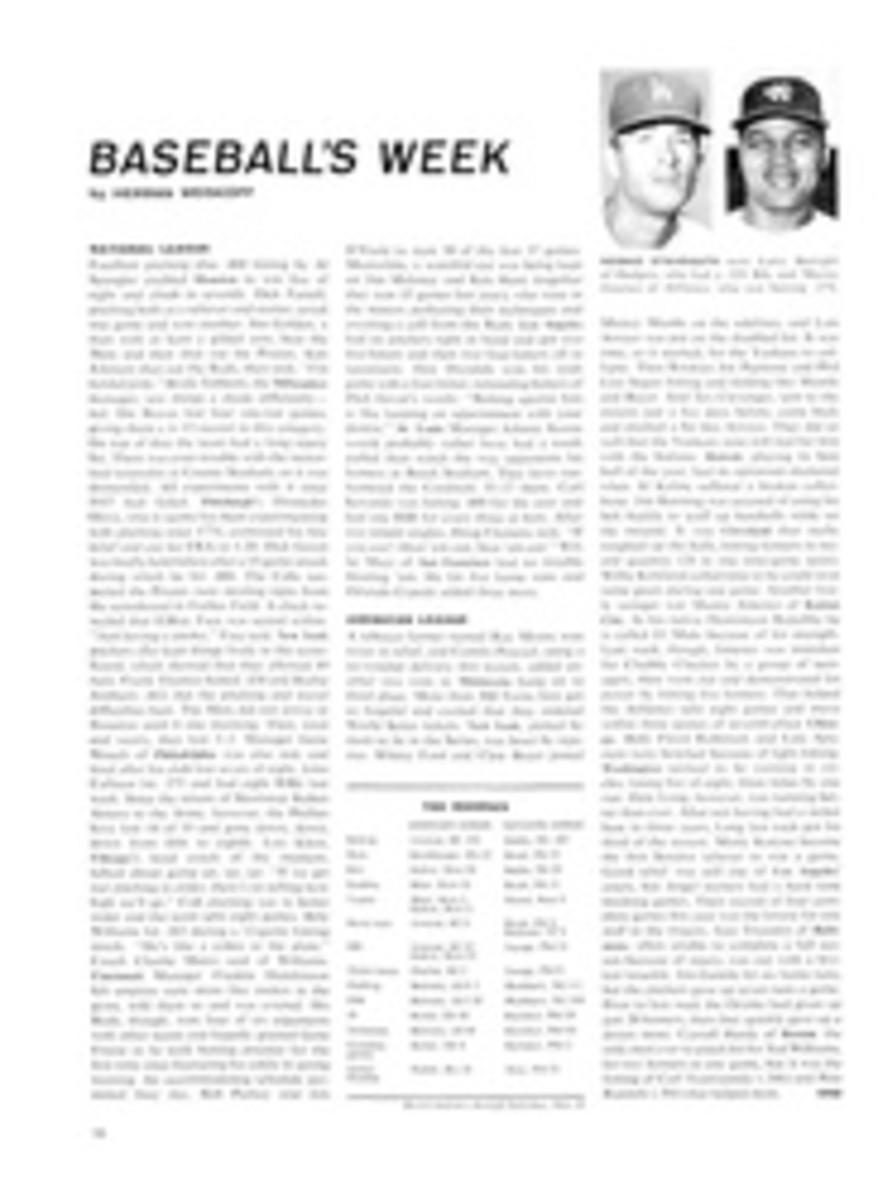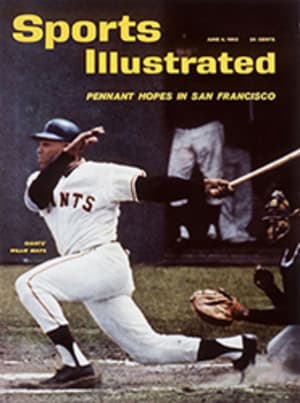
THE STRATEGIES OF SINGLES
"Perfect style, inexhaustible stamina, even the best strokes are of no avail," wrote an early authority on tennis, "if the brain that governs the hands is not taking stock of strategic positions by which winning coups may be achieved." In his forthcoming book, The Game of Singles in Tennis (Lippincott), written with Bruce S. Old, former Davis Cup Captain and U.S. Doubles Champion Bill Talbert takes full stock of the strategies by which a host of the leading tennis stars have made their games pay off in points. Talbert and Old, a senior vice-president of the research firm of Arthur D. Little, Inc., made tennis laboratories of the world's top grass, clay and hard court tournaments, recording the stroke-by-stroke progress of virtually every point in every important match for six years. Then they analyzed these detailed observations to plot the maneuvers that win and lose tennis matches. Some of the results are demonstrated in the diagrams on the following pages.
Many excellent tennis books have been written about such basics of the game as stroke production, but the questions Bruce Old and I asked ourselves about tennis at the start of this book went somewhat deeper. They were concerned not only with how to play tennis but how to win at it. What, for example, is the actual advantage in points won of the big-serve-and-volley game? How important statistically is the first serve? The second? The return? What is the most effective target for a passing shot? A kill? The world's best tennis players, going all out to win in game after game at Forest Hills, Wimbledon, River Oaks, Paris and elsewhere, gave us the answers. We found, for instance, that the first serve accounts for 33% of all winning strokes in the modern game. More important, perhaps, we found that 50% of all first serves are aimed at the outside corners of the service courts (1 in the first diagram). Second serves, on the other hand, are more likely to be hit to the receiver's backhand in both service courts (1 in second diagram) and when thus aimed are about as effective in winning points as the harder-hit first serves. Returns of service were, of course, less easy to plot and analyze, but an index of their importance is the fact that some 25% of serves are not returned at all.
Obviously, no set of diagrams could cover every contingency in a game where an attack can be met by a dozen different defenses, any one of which in turn opens the door to new attacks. On these pages we have contented ourselves with six classic situations. To discourage thinking of the opposite court as merely a large area on the other side of the net, we have blocked out strategic areas of play in contrasting colors. Straight lines indicate the flight paths of stroked balls (the dash-dot line is a lob); ovals show positions of players and dashed lines their movements. A careful study of these situations should, we believe, give every player, whether weekend or tournament, a better understanding of the strategic and tactical nature of tennis.
On first serves, the favorite aim points (1)—used by the experts at least half the time—are deep to the outside corners. Their purpose is to force the receiver out of position and hence to open up the court for a winning first volley by the server. The purpose behind the second-and third-preference aim points (2 and 3) is to capitalize on a receiver's stroke weakness or poor positioning or to keep him guessing.
On second serves, the preferred aim is to the same areas in both service courts. Because it is easy to control, the American twist is almost invariably used for the second serve. Since it naturally spins the ball to areas 1 and 2, two-thirds of the serves in the forehand court and three-quarters of those in the backhand fall into these areas. Serves sliced to area 3 and its vicinity are designed only to keep the receiver guessing.
Against net rush of server who has hit deep to area C in the forehand court, low returns sent cross-court to aim point 1 and down the line to 3 or 4 are about equally decisive, although experts tend to use the cross-court return twice as often as the other. From area A, however, the cross-court return to aim point 1 gives more outright winners. Overall, low cross-court and down-the-line returns yield about 55% winning shots; returns to mid-court (aim point 2) yield only about 40%.
A good passing shot depends on the ability of the would-be passer to force his opponent into volleying short. For example, here a receiver moves in to hit a serve down the line toward point 1. This forces the server to reach far over to his left to make the volley from near the ground in what probably will prove a feeble shot. The alert passer can then send his shot down the line to 1 (behind the volleyer as he moves toward center), cross-court to 2 or over the server's head to 3.
Going to net behind serve, the server must in general follow a line bisecting the angle (ARB) marking the likely extremes of any return. As shown here in a serve down the middle to the forehand court, the server's best position is a few inches on the receiver's forehand side of that bisector, since the return probably will be slightly faster on that side. Note that as the server comes closer in to the net, the space between the AR and BR lines narrows. He thus has less ground to cover.
Going for the kill means hitting to a place where your opponent isn't or hitting behind him as he moves. Here a server is getting set to make his second volley and from watching his opponent he must decide in split seconds where to place it. If the receiver hesitates too long at R, server can volley a high ball to point 1 or, if the ball is low, deep to point 2. If receiver commits himself toward 2 or 1, however, a high ball can be slammed to 3, a low ball to 4 or a drop volley to 5.
PHOTO ILLUSTRATION
1
2
3
1
2
3
PHOTO ILLUSTRATION
1
2
3
1
2
3
PHOTO ILLUSTRATION
1
2
3
4
A
B
C
PHOTO ILLUSTRATION
1
2
3
PHOTO ILLUSTRATION
A
B
PHOTO ILLUSTRATION
1
2
3
4
5

